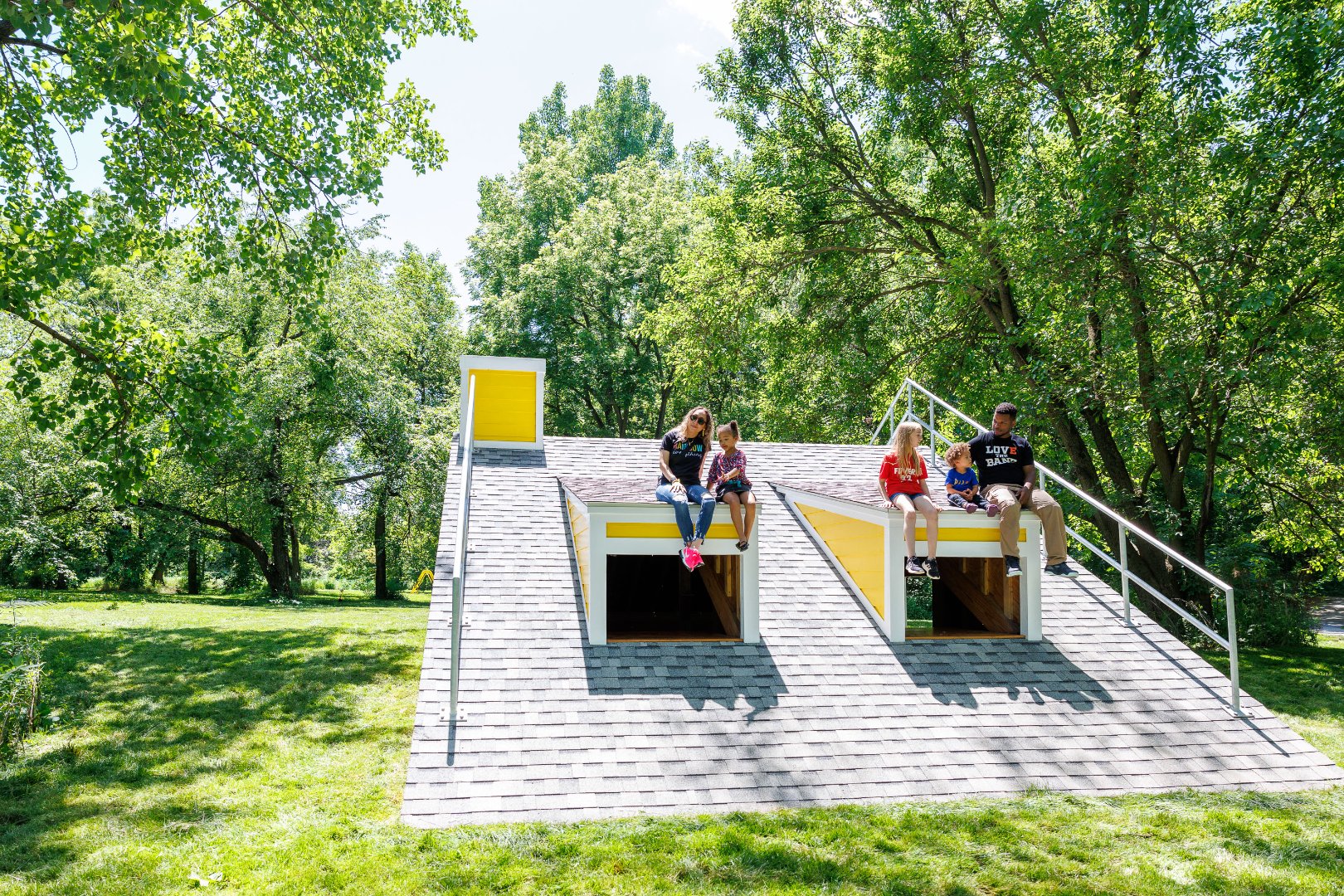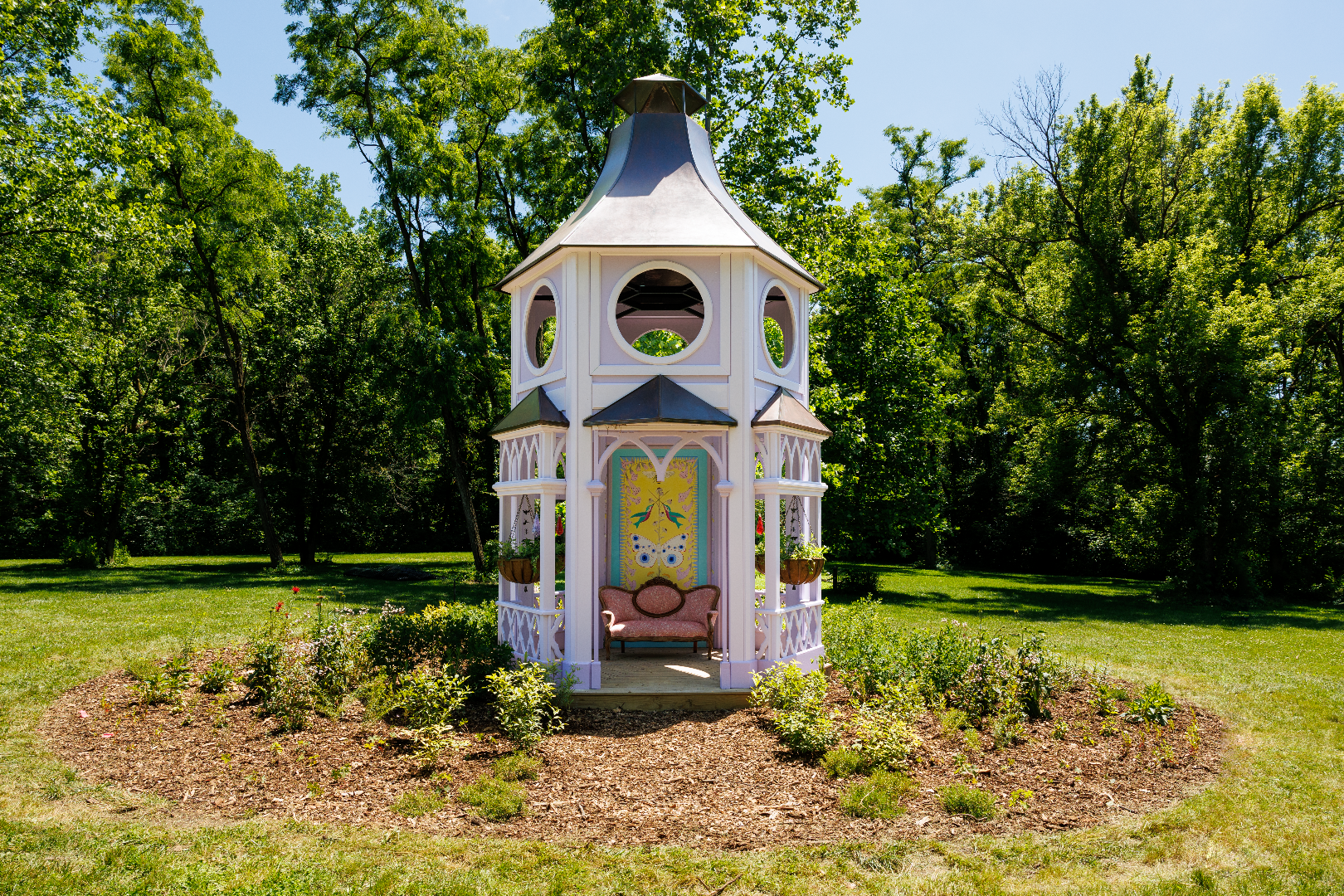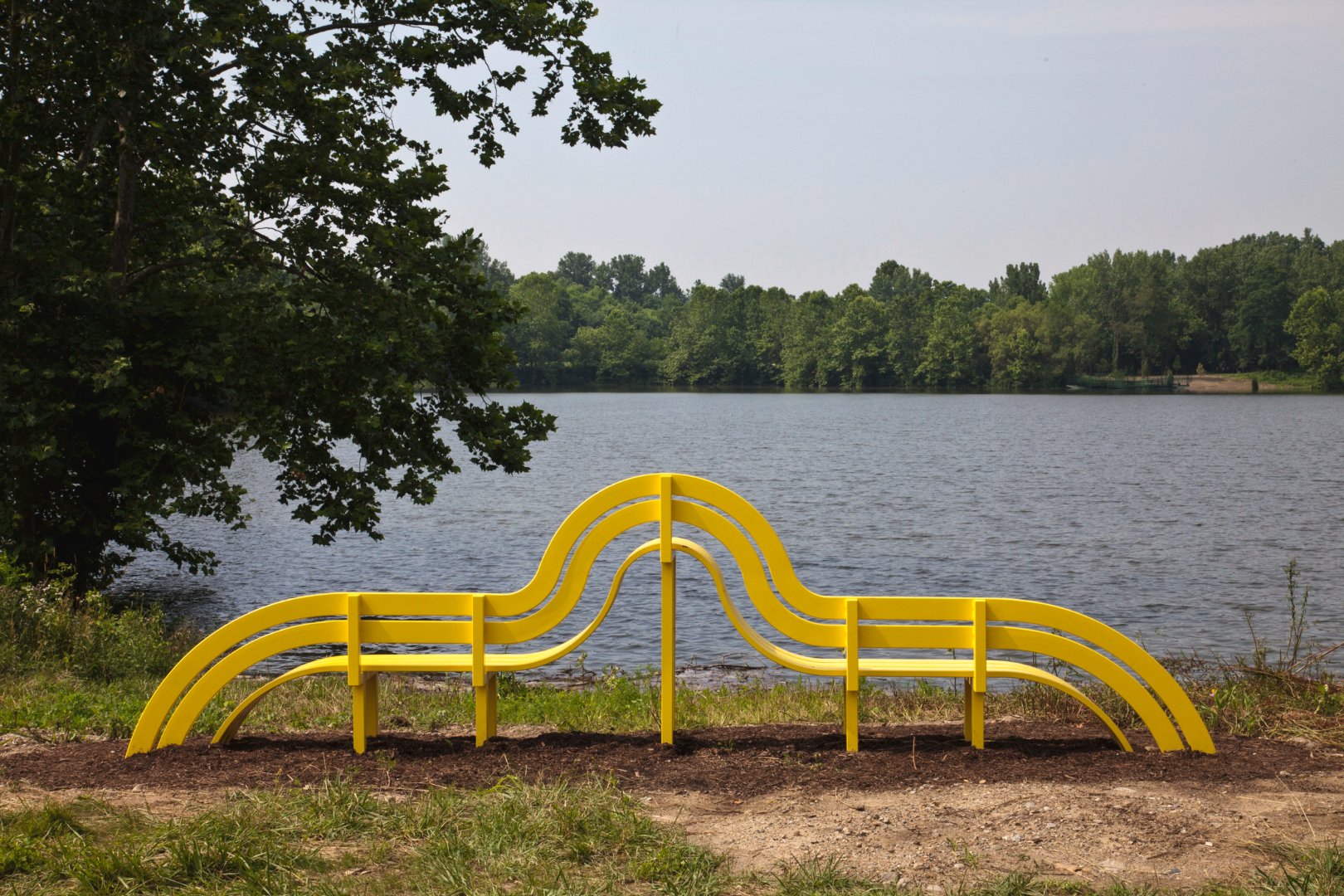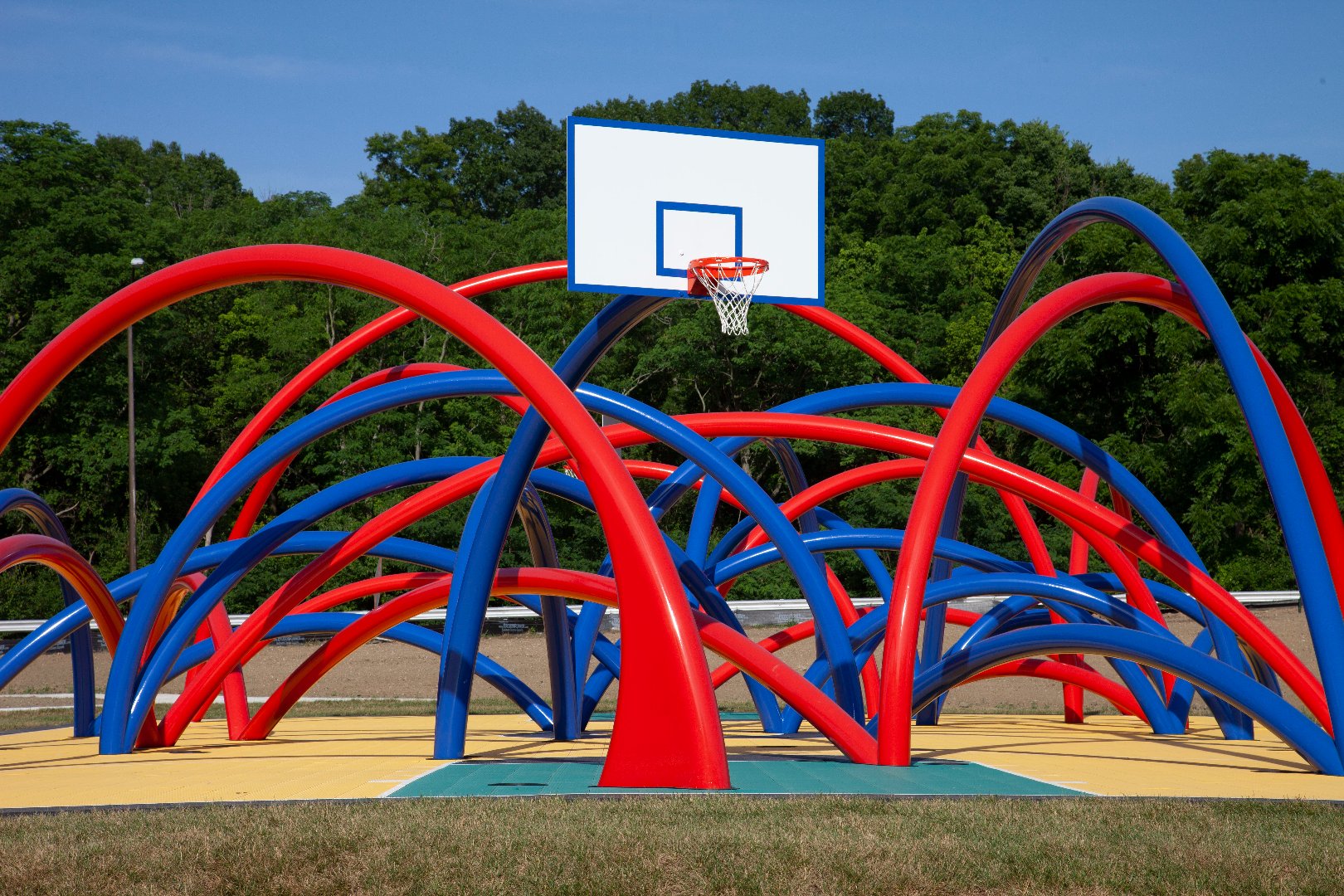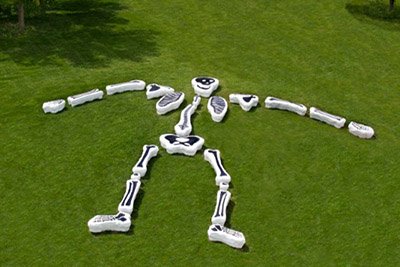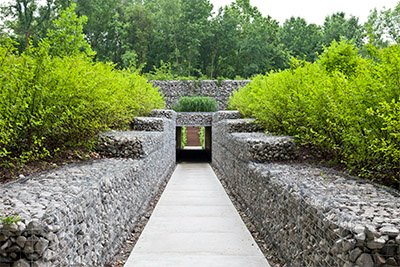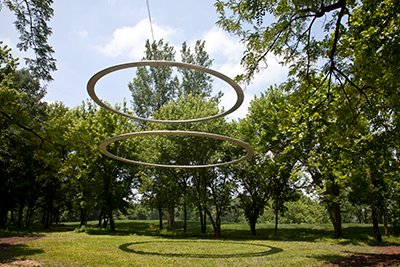The Virginia B. Fairbanks Art & Nature Park presents contemporary sculptures, exhibitions, and programs that encourage guests to connect with nature and consider their relationship with the environment. The artworks you'll find in the park are designed specifically for the space, and to encourage playful interaction.
Children can climb on Atelier Van Lieshout’s Funky Bones. Visitors are invited to relax or search for all 15 of Jeppe Hein’s bright yellow “social benches” comprising Bench Around the Lake. Or play basketball on an internationally scaled court with red and blue arches visualizing the bouncing balls of an opposing team in Los Carpinteros' surrealist and iconic Free Basket.
Alternately, Alfredo Jaar’s Park of the Laments is designed to be fully immersive and transform viewers' spatial experience as they transition through a liminal space—a concrete tunnel—and then walk through a stepped area filled with native plantings. From a central stairwell, visitors walk up into a park within the larger park, a space to quietly reflect, meditate, and recharge.
Exhibition open now: Home Again
The Hawryluk Sculpture Green in The Virginia B. Fairbanks Art & Nature Park
Open daily from dawn to dusk / Tickets are not required to visit The Virginia B. Fairbanks Art & Nature Park
Welcome home! The long-awaited exhibition Home Again features three new sculptures in the park centered around the notion of home and shelter. Brooklyn-based artist Heather Hart’s canary yellow interactive rooftop Oracle of Intimation appears as if it has fallen from the sky. Climb through the windows, make the roof your stage, and catch spontaneous and planned performances, workshops, and community discussions on and near the sculpture.
Art and nature collide in the Pollinator Pavilion by New York-based artists Mark Dion and Dana Sherwood. The colorful gazebo is designed for humans, birds, and insects alike to slow down and become part of nature.
Pakistan-born, Indianapolis-based artist Anila Quayyum Agha’s beautiful and contemplative white filigree house-shaped structure features Agha’s signature laser-etched floral patterning inspired by Islamic art and architecture. This is NOT a Refuge illustrates the hope, humor, challenges, and heartbreaks of dozens of refugees who are living in Indianapolis.
Home Again is the first major activation in The Virginia B. Fairbanks Art & Nature Park since it opened in 2010. It is the first installation of The Hawryluk Sculpture Green, a new series of outdoor public art installations in The Virginia B. Fairbanks Art & Nature Park, made possible by a $3 million gift by Kent Hawryluk, a longtime Newfields patron.





